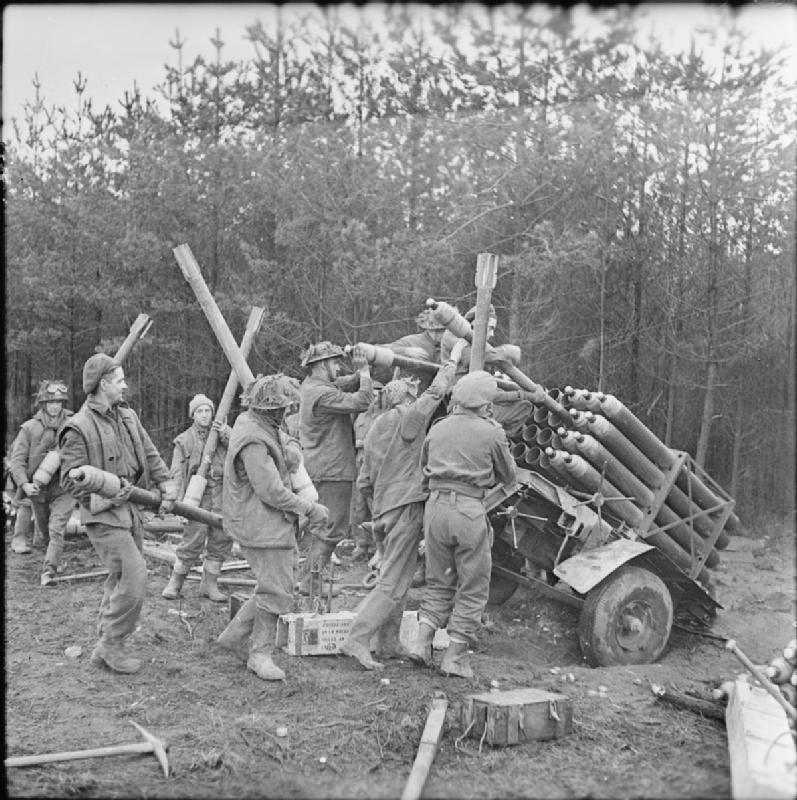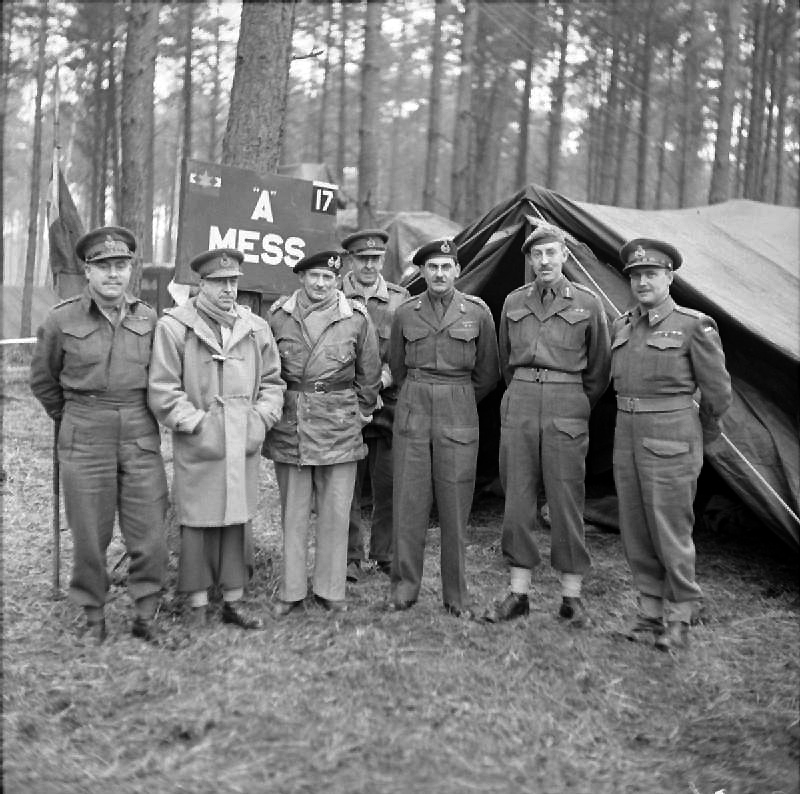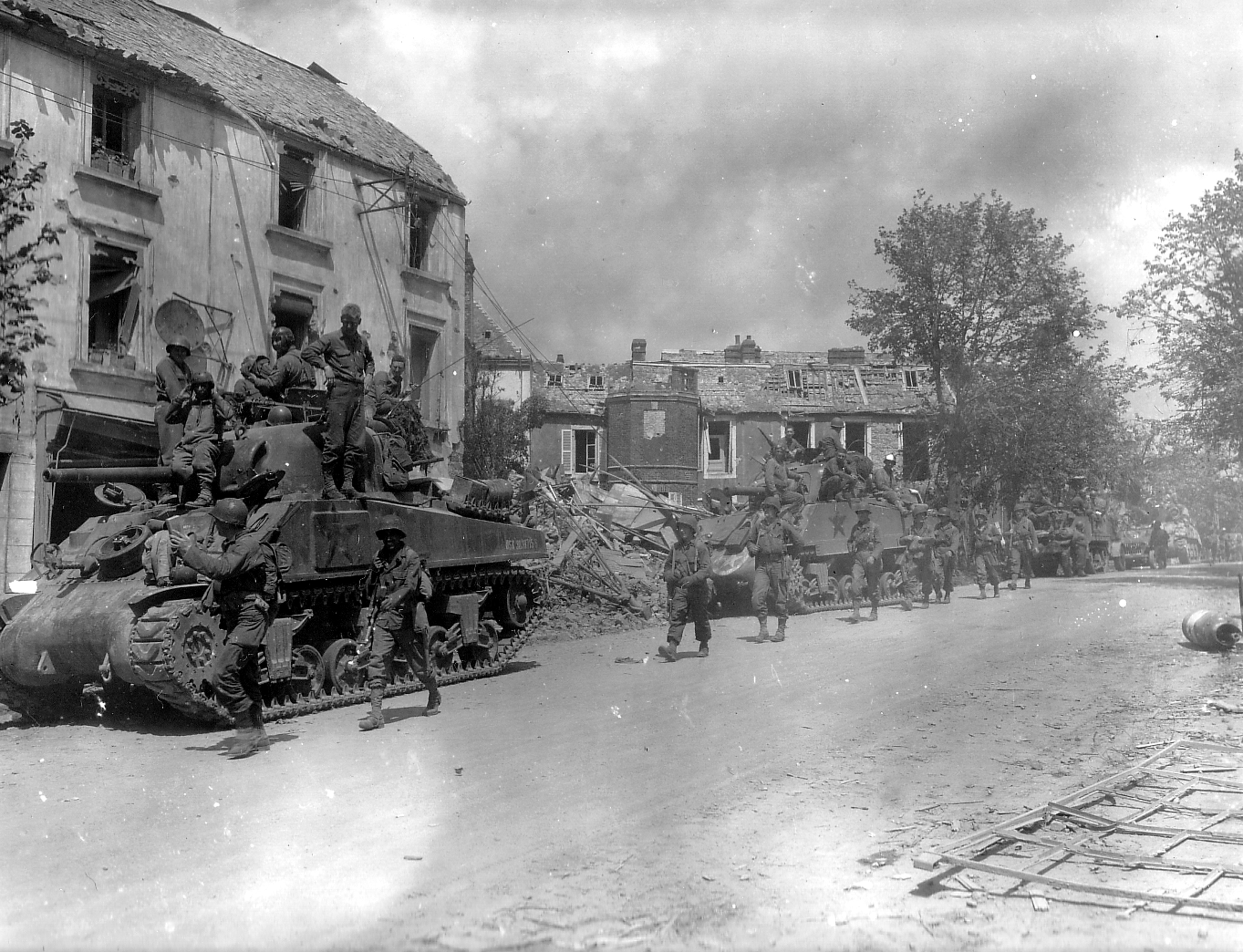|
U.S. Ninth Army
The Ninth Army was a field army of the United States Army, most recently garrisoned at Caserma Ederle, Vicenza, Italy. It was the United States Army Service Component Command of United States Africa Command (USAFRICOM or AFRICOM). Activated just eight weeks before the June 1944 Normandy landings, the Ninth Army was one of the main U.S. Army combat commands used during the campaign in Northwest Europe in 1944 and 1945. It was commanded at its inception by Lieutenant General William Simpson. It had been designated Eighth Army, but on arrival in the United Kingdom it was renamed to avoid confusion with the British formation of the same designation, taking the name of a unit of the fictitious First United States Army Group prepared for Operation Quicksilver. All American field armies in the European Theatre of Operation were designated with odd numbers; even numbered field armies served in the Pacific Theatre of Operations. History The first responsibility for Ninth Army, ... [...More Info...] [...Related Items...] OR: [Wikipedia] [Google] [Baidu] |
Field Army
A field army (also known as numbered army or simply army) is a military formation in many armed forces, composed of two or more corps. It may be subordinate to an army group. Air army, Air armies are the equivalent formations in air forces, and Naval fleet, fleets in navy, navies. A field army is composed of 80,000 to 300,000 soldiers. History Specific field armies are usually named or numbered to distinguish them from "army" in the sense of an entire national defence force or land force. In English language, English, the typical orthography, orthographic style for writing out the names field armies is Numeral (linguistics), word numbers, such as "First Army"; whereas corps are usually distinguished by Roman numerals (e.g. I Corps) and subordinate formations with ordinal number (linguistics), ordinal numbers (e.g. 1st Division). A field army may be given a geographical name in addition to or as an alternative to a numerical name, such as the British Army of the Rhine, Army of t ... [...More Info...] [...Related Items...] OR: [Wikipedia] [Google] [Baidu] |
Pacific War
The Pacific War, sometimes called the Asia–Pacific War or the Pacific Theatre, was the Theater (warfare), theatre of World War II fought between the Empire of Japan and the Allies of World War II, Allies in East Asia, East and Southeast Asia, the Pacific Ocean, Pacific and Indian Oceans, and Oceania. It was geographically the largest theatre of the war, including the Pacific Ocean theater of World War II, Pacific Ocean theatre, the South West Pacific theater of World War II, South West Pacific theatre, the Second Sino-Japanese War, and the brief Soviet–Japanese War, and included some of the Largest naval battle in history, largest naval battles in history. War between Japan and the Republic of China (1912–1949), Republic of China had begun in 1937, with hostilities dating back to Japanese invasion of Manchuria, Japan's invasion of Manchuria in 1931, but the Pacific War is more widely accepted to have started in 1941, when the United States and United Kingdom entered the ... [...More Info...] [...Related Items...] OR: [Wikipedia] [Google] [Baidu] |
Operation Veritable
Operation Veritable (also known as the Battle of the Reichswald) was the northern part of an Allies of World War II, Allied pincer movement that took place between 8 February and 11 March 1945 during the final stages of the World War II, Second World War. The operation was conducted by Field marshal (United Kingdom), Field Marshal Bernard Montgomery's Anglo-Canadian 21st Army Group, primarily consisting of the First Canadian Army under Lieutenant-general (Canada), Lieutenant-General Harry Crerar and the XXX Corps (United Kingdom), British XXX Corps under Brian Horrocks, Lieutenant-general Brian Horrocks. ''Veritable'' was the northern pincer movement and started with XXX Corps advancing through the Klever Reichswald, Reichswald (German: Imperial Forest) while the 3rd Canadian Division, 3rd Canadian Infantry Division, in amphibious vehicles, cleared German positions in the flooded Rhine plain. The Allied advance proceeded more slowly than expected and at greater cost as the Ameri ... [...More Info...] [...Related Items...] OR: [Wikipedia] [Google] [Baidu] |
Canadian First Army
The First Canadian Army () was a field army and a formation of the Canadian Army in World War II in which most Canadian elements serving in North-West Europe were assigned. It served on the Western Front from July 1944 until May 1945. It was Canada's first and, so far, only field army. The army was formed in early 1942, replacing the existing unnumbered Canadian Corps, as the growing contribution of Canadian forces to serve with the British Army in the United Kingdom necessitated an expansion to two corps. By the end of 1943 Canadian formations consisted of three infantry divisions, two armoured divisions and two independent armoured brigades. The first commander was Lieutenant-General A. G. L. "Andy" McNaughton, who was replaced in 1944 by General H. D. G. "Harry" Crerar. Both had been senior Royal Regiment of Canadian Artillery officers in the Canadian Corps in World War I. Allied formations of other nationalities were added to the First Canadian Army to keep it at full stre ... [...More Info...] [...Related Items...] OR: [Wikipedia] [Google] [Baidu] |
Operation Grenade
During World War II, Operation Grenade was the crossing of the Roer river between Roermond and Düren by the U.S. Ninth Army, commanded by Lieutenant General William Hood Simpson, in February 1945, which marked the beginning of the Allied invasion of Germany. On 9 February, the U.S. Ninth Army—operating under Field Marshal Bernard Montgomery's Anglo-Canadian 21st Army Group since the Battle of the Bulge—was to cross the Roer and link up with the Canadian First Army, under Lieutenant-General Harry Crerar, coming from the Nijmegen area of the Netherlands in Operation Veritable, which had started at 05:00 on 8 February. However, once the Canadians had advanced, the Germans opened the sluice gates of upstream Roer dams. This stopped the Americans from crossing as planned. It had been anticipated that the Germans would try to do this, and that General Omar Bradley's U.S. 12th Army Group could capture them in time to stop the flooding. During the two weeks that the river w ... [...More Info...] [...Related Items...] OR: [Wikipedia] [Google] [Baidu] |
Rhineland Campaign
The Siegfried Line campaign was a phase in the Western Front (World War II)#1944–1945: The Second Front, Western European campaign of World War II, which involved engagments near the German defensive Siegfried Line. This campaign spanned from the end of Operation Overlord and the push across northern France, which ended on 15 September 1944, and concluded with the opening of the German Ardennes counteroffensive, better known as the Battle of the Bulge. Background German forces had been routed during the Allies of World War II, Allied Operation Cobra, break-out from Normandy. The Allies advanced rapidly against an enemy that put up little resistance. But after the liberation of Paris in late August 1944, the Allies paused to re-group and organise before continuing their advance from Paris to the Rhine, River Rhine. The pause allowed the Germans to solidify their lines—something they had been unable to do west of Paris. By the middle of September 1944, the three Western Al ... [...More Info...] [...Related Items...] OR: [Wikipedia] [Google] [Baidu] |
Omar Bradley
Omar Nelson Bradley (12 February 1893 – 8 April 1981) was a senior Officer (armed forces), officer of the United States Army during and after World War II, rising to the rank of General of the Army (United States), General of the Army. He was the first chairman of the Joint Chiefs of Staff and oversaw the U.S. military's policy-making in the Korean War. Born in Randolph County, Missouri, he worked as a boilermaker before entering the United States Military Academy at West Point, New York, West Point. He graduated from the academy in 1915 alongside Dwight D. Eisenhower as part of "the class the stars fell on." During World War I, he guarded copper mines in Montana. After the war, he taught at West Point and served in other roles before taking a position at the United States Department of War, War Department under General George Marshall. In 1941, he became commander of the United States Army Infantry School. After the U.S. entry into World War II, he oversaw the transformatio ... [...More Info...] [...Related Items...] OR: [Wikipedia] [Google] [Baidu] |
First Army (United States)
First Army is the largest OC/T organization in the U.S. Army, comprising two divisions, ten brigades, and more than 7,500 Soldiers. Its mission is to partner with the U.S. Army National Guard and U.S. Army Reserve to enable leaders and deliver trained and ready units for Combatant Commands. On order, First Army executes large-scale mobilization and unit eonstitution to build America’s Army for combat. First Army achieves this through four lines of effort: Develop the Profession; Deliver Combat Ready Forces; Enable Reserve Component Warfighters; and Transformation for the Total Army of 2040. History Establishment and World War I The First Army was established on 10 August 1918 as a field army when sufficient American military manpower had arrived on the Western Front during the final months of World War I. The large number of troops assigned to the American Expeditionary Forces (AEF) required the activation of subordinate commands. To fill this need, First Army was ... [...More Info...] [...Related Items...] OR: [Wikipedia] [Google] [Baidu] |
British 21st Army Group
The 21st Army Group was a British headquarters formation formed during the Second World War. It controlled two field armies and other supporting units, consisting primarily of the British Second Army and the First Canadian Army. Established in London during July 1943, under the command of Supreme Headquarters Allied Expeditionary Force (SHAEF), it was assigned to Operation Overlord, the Western Allied invasion of Europe, and was an important Allied force in the European Theatre. At various times during its existence, the 21st Army Group had additional British, Canadian, American, and Polish field armies or corps attached to it. The 21st Army Group operated in Northern France, Luxembourg, Belgium, the Netherlands and Germany from June 1944 until August 1945, when it was renamed the British Army of the Rhine (BAOR). Western European theatre Normandy Commanded by General (later Field Marshal) Sir Bernard Montgomery, 21st Army Group initially controlled all ground forces in ... [...More Info...] [...Related Items...] OR: [Wikipedia] [Google] [Baidu] |
Bernard Montgomery
Field Marshal Bernard Law Montgomery, 1st Viscount Montgomery of Alamein (; 17 November 1887 – 24 March 1976), nicknamed "Monty", was a senior British Army officer who served in the First World War, the Irish War of Independence and the Second World War. Montgomery first saw action in the First World War as a junior officer of the Royal Warwickshire Regiment. At Méteren, near the Belgian border at Bailleul, he was shot through the right lung by a sniper, during the First Battle of Ypres. On returning to the Western Front as a general staff officer, he took part in the Battle of Arras in AprilMay 1917. He also took part in the Battle of Passchendaele in late 1917 before finishing the war as chief of staff of the 47th (2nd London) Division. In the inter-war years he commanded the 17th (Service) Battalion, Royal Fusiliers and, later, the 1st Battalion, Royal Warwickshire Regiment before becoming commander of the 9th Infantry Brigade and then general officer comm ... [...More Info...] [...Related Items...] OR: [Wikipedia] [Google] [Baidu] |
Battle Of The Bulge
The Battle of the Bulge, also known as the Ardennes Offensive or Unternehmen Die Wacht am Rhein, Wacht am Rhein, was the last major German Offensive (military), offensive Military campaign, campaign on the Western Front (World War II), Western Front during the World War II, Second World War, taking place from 16 December 1944 to 25 January 1945. It was launched through the densely forested Ardennes region between Belgium and Luxembourg. The offensive was intended to stop Allied use of the Belgian port of Antwerp and to split the Allied lines, allowing the Germans to Encirclement, encircle and destroy each of the four Allied armies and force the western Allies to negotiate a peace treaty in the Axis powers' favor. The Germans achieved a total surprise attack on the morning of 16 December 1944, due to a combination of Allied overconfidence based on the favorable defensive terrain and faulty intelligence about Wehrmacht intentions, poor aerial reconnaissance due to bad weather, an ... [...More Info...] [...Related Items...] OR: [Wikipedia] [Google] [Baidu] |
Roer River
The Roer (, ) or Rur (; ) is a major river that flows through portions of Belgium, Germany and the Netherlands. It is a right (eastern) tributary to the Meuse (). About 90 percent of the river's course is in Germany. It is not to be confused with the rivers Ruhr and Röhr, which are tributaries of the Rhine in North Rhine-Westphalia. History During the Middle Ages the valley of the Roer lay mostly within the Duchy of Jülich. In 1795, until 1814, during which time the area was part of the French Republic and Empire, it gave its name to the French ''département'' of the Roer. The Roer represented an important front in the Allied push towards Germany at the end of the Second World War. A fortified area known as the Roer Triangle, formed by the towns of Roermond and Sittard, in the Netherlands, and Heinsberg in Germany, was the scene of heavy fighting at the beginning of 1945. Operation Blackcock was the code name for the clearing of the Roer Triangle. It was conduct ... [...More Info...] [...Related Items...] OR: [Wikipedia] [Google] [Baidu] |









